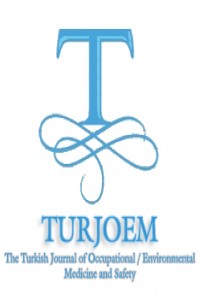Öz
Toxicities from
illicit and abused substances in pet animals by accidental, intentional or
malicious ingestion, are an occasional problem in veterinary practice; where
the difficulties of clinical diagnosis and the possible lack of good of
anamnesis (owners may provide inaccurate, incomplete, deceive misleading
history) creates a higher risk for the survival. In these cases, animals are
usually presented to the veterinary clinics once the clinical signs are
apparent. Veterinarians are obliged to report legal authorities when the animal
is diagnosed with these drugs; whereas it is usually missed. Dogs that work for
police and customs are at an increased risk of illicit drug intoxication.
Diagnostically, available test kits may help exclude a suspected case in
clinics/animal hospitals; meanwhile for the detection of exact amount of
exposure, veterinary diagnostic laboratories are required. Whereas, veterinary
toxicology laboratories including the broader spectrum of drugs with species
specific differences (specific metabolites) are missing in our country, which
would expected to serve practicioners in the field. Among the illicit and
abused drugs, a discussion of the more common poisonings for dogs and cats
including amphetamine/amphetamine-like compounds, sedative/hypnotics, opioids,
ketamine, marijuana, synthetic cannabinoids, cocaine, heroin, MDMA,
hallucinogens (LSD, mushroom) with their pharmacokinetics, toxicity,
pathogenesis, clinical findings diagnostics along with the species specific
treatment options are presented. The general opinion, regarding the mirror
approaches for the diagnostics/treatment of illicit/abused drugs in humans for
pets, should be converted into a more species specific approach with an
emphasis in veterinary toxicology.
Anahtar Kelimeler
Kaynakça
- Begum YURDAKOK-DIKMEN, Ayhan FILAZI
- Department of Pharmacology and Toxicology, Faculty of Veterinary Medicine, Ankara University, Turkey.
Öz
Kaynakça
- Begum YURDAKOK-DIKMEN, Ayhan FILAZI
- Department of Pharmacology and Toxicology, Faculty of Veterinary Medicine, Ankara University, Turkey.
Ayrıntılar
| Bölüm | Articles |
|---|---|
| Yazarlar | |
| Yayımlanma Tarihi | 16 Şubat 2017 |
| Yayımlandığı Sayı | Yıl 2017 Cilt: Volume 2 Sayı: İssue 1 (1) - 2.İnternational Congress Of Forensic Toxicology |

